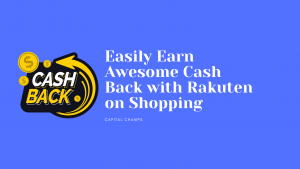Have you ever felt confused trying to understand all the nitty-gritty details about credit cards? With complex terms like APR, credit limits, and minimum payments, credit cards can seem mystifying. Well, fret not! This comprehensive guide breaks down everything you need to know about credit cards in simple language. Whether you already have a card or are considering getting one, you’ll be a credit card pro after reading this. So, let’s get started!
Choosing the Right Credit Card
With countless options to choose from, picking the best credit card for your needs can be challenging. Here are key factors to consider:
Interest Rates
If you often carry a balance on your card, focus on cards with lower APR (Annual Percentage Rate). This helps save on interest charges. For instance, a card with 18% APR instead of 21% APR will have lower interest fees.
Rewards and Perks
Cards with travel miles, cashback, or purchase rewards seem lucrative. But weigh if the rewards outweigh the fees. For example, a card offering 1 mile/$1 spend seems great. But does an $85 annual fee justify accumulating miles worth $50? Run the math before jumping for perks. Here are aspects to evaluate:
- Earning Rate: A card promising 5 miles per $1 spend seems generous but if the redemption rate for flights is 10,000 miles for a $100 ticket, it takes high spending to redeem rewards. Know both earn and burn rates.
- Redemption Hassles: Many rewards have blackout dates, seat unavailability issues, or redemption conditions like having to book within fixed periods after mile accumulation etc. Check flexibility.
- Annual Spend Targets: Top tier cards waive annual fees conditional on heavy usage like $15,000+ per year. Be realistic about your probable spending before opting for premium cards charging $500+ annual fees.
Weigh all such factors, not just reward earn rates. Paying hefty fees rarely makes sense for average users targeting basic travel or cashback rewards.
Fees
Watch out for sneaky fees like annual, balance transfer, foreign transaction, or over-limit fees. If you rarely travel abroad, skip cards charging 3% on foreign purchases. Opt for no-fee cards if you are a moderate user.
Who Else Can Use Your Credit Card?
You can add others to use your credit card account too. Here are some common arrangements:

Authorized Users
You can assign a spouse, family member etc. as an authorized user. They access your credit limit to make purchases but are not liable to pay the bill – you are!
Joint Accounts
In case of joint/co-applicant accounts, both primary cardholders share repayment liability and credit impacts equally. Before co-applying, be sure your co-party pays reliably.
Supplementary Cards
As the primary holder, you can request a supplementary card in another person’s name tied to your credit limit. You remain accountable for repayment of their purchases too. So supplementary card discipline matters!
Should You Opt for Balance Insurance?
Balance insurance helps manage credit card dues in case of job loss, critical illness etc by covering minimum payments. While helpful for some, it is an expensive facility with many restrictions. Thoroughly read the coverage terms before signing up to ensure it fits your needs. Alternatively, an emergency fund may better cushion repayment worries.
Strategize Your Credit Card Repayments
Wondering how best to eliminate credit card debt in a financially savvy way? Use the credit card calculator below to compare repayment scenarios:
Use this Credit Card Payment Calculator to calculate your credit payments.
Payment Date Versus Statement Date
Timing your card payments properly ensures you avoid late fees or interest charges. Two key dates play a role here:
Statement Date
This is the snapshot date when card providers tally your outstanding balance to prepare monthly statements/bills. Purchases until this point reflect in the current bill.
Payment Due Date
You must pay at least the minimum amount due on your card by the payment date mentioned on your statement to avoid late payment penalties. Aim to pay the entire statement balance by the payment date whenever feasible to skip interest fees too.
Factor statement and payment turnaround times to ensure your dues never default while maximizing interest savings.
Clearly, minimizing interest burden by aggressively paying over the minimum due is wise. Even an extra $100 repayment on a $2000 balance saves significantly in interest! Use such data-driven strategies to repay faster.
Finding Your Perfect Card Match
With so many products in the market, how do you narrow down to your ideal credit card? This comparison tool allows you to filter cards by interest rate, fees, rewards etc and zero down on the perfect card matching your spending behaviour. Give it a spin to find tailored card suggestions!
Use this Credit Card Comparison Tool to compare credit cards according to your needs and before you apply for one.
Customizing card choices per individual spending needs using such tools maximizes value.
Safeguarding Against Fraud
Fraud triggers unauthorized or unapproved transactions. Immediately notify your card provider if you detect deceitful purchases or cash withdrawals. Changing passwords and reviewing credit reports regularly also helps. Under consumer protection laws, fraud liability is limited to $50 for credit cards and nil for unauthorized debit card use. Stay vigilant and act promptly if you suspect theft – it pays to be alert!
Demystifying Credit Card Functioning
Unsure about how credit cards really work? Let’s lift that veil of complexity!
- A credit limit defines your maximum spending capacity. Interest kicks in when you delay full card bill payments.
- Grace periods (up to 21 days) provide fee-free repayment windows for purchases only, excluding cash advances.
- Card networks like Visa and Mastercard ensure fraud protection by limiting consumer liability as explained earlier.
- Fees apply for cash withdrawals, balance transfers, foreign currency dealings etc. So, beware!
Credit Limits
Your card limit defines the maximum spending potential on your card. Try maintaining usage under 30% of the allowed limit. Very high utilization percentages can negatively impact credit scores.
Interest Calculations
If you only partially pay card bills, interest calculation methods come into play usually using daily averaged outstanding principal methodology. So, check statement summaries to understand applicable interest charge calculations.
Foreign Currency Markups
Using cards overseas entails additional currency conversion layers making transactions 2-3% expensive. So, prefer debit cards or foreign exchange cards when traveling.
Now you know the central mechanisms governing credit card transactions. Not so puzzling after all!
Prudent Management Guidelines
Did you know even a small delay in credit card payments leads to exorbitant interest and credit score damage? Use these tips to use cards smartly:
- Never miss minimum payments due. Also, pay more than the minimum whenever possible – it slashes interest burden significantly.
- Safeguard card details; memorize passwords rather than noting them down.
- Use cards only for manageable, affordable spends so that paying bill amounts in full never proves difficult.
Monitoring Credit Reports & Scores
Your credit data is an asset. Keep tabs by:
- Securing your free credit reports annually from credit bureaus via online access or mail.
- Building a habit of quarterly credit report checks. Stay on top of errors!
- Reviewing your credit score regularly too using online tools. Aim for above 720 score for best loan/card approvals.
Maximizing Credit Card Impacts on Scores
Your credit utilization ratio, which means the percentage of total available revolving credit you use every month, greatly influences credit scores. Usage under 30% of total credit limits helps scores, while exceeding 50% raises credit risk flags dropping scores.
For example, say you have 3 credit cards with $1000 limit each, making your overall limit $3000. In a particular month, you’ve used $500 across the 3 cards making utilization $500/$3000 = 17%. Great job! But next month if higher spends take your utilization to $2000/$3000 = 67%, it will negatively affect your credit score due to perceived credit risk.
So, ensure you use no more than 30% of aggregate limits monthly for score uplift. Pay off larger monthly spends promptly to restore ideal utilization levels. With this smart strategy, you can harness the positive score impacts of proper credit card usage.
Closing Your Card Smoothly
Want to cancel an unused credit card but unsure how it’s done? Just follow these quick steps to conclude matters properly:
- Contact your card provider requesting account closure via call or mail. Ensure written confirmation once it is closed.
- Check incoming card payments and disputes are settled even 1-2 billing cycles post cancellation.
- Examine credit reports to confirm the closed card reflects properly there too.
And you’re done! As simple as that.
As you can see clearly now, credit cards represent accessible, convenient transaction tools when used judiciously. We hope this detailed guide better equips you to make optimal card decisions! Share widely so others too can unravel credit card mastery. Share your opinion with us.



